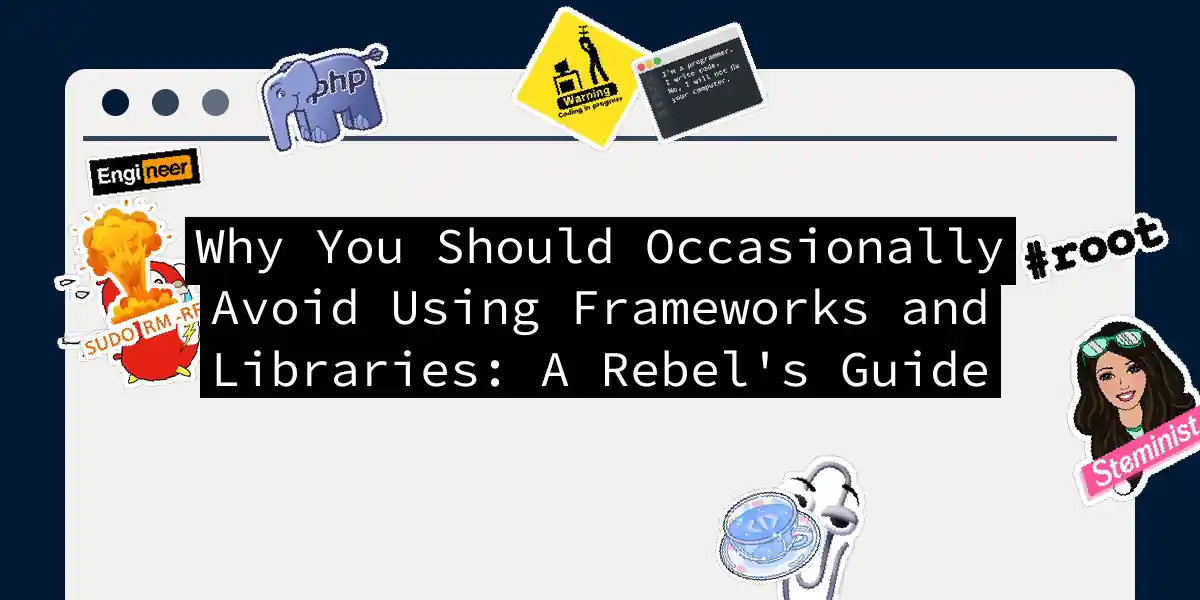Let me confess something: I once built a production API using only Node.js core modules. When colleagues saw it, their reactions ranged from “You absolute maniac!” to “Wait… this actually works?” Spoiler: it did. While frameworks like Express or NestJS are wonderful safety nets, sometimes cutting the umbilical cord teaches you how gravity really works.
The Hidden Costs of Framework Comfort
Performance Penalties
Frameworks ship with metaphorical kitchen sinks. That 40KB “hello world” Express app? Here’s the naked Node.js version:
const http = require('http');
const server = http.createServer((req, res) => {
res.end('Hello Framework-Free World!');
});
server.listen(3000);
That’s 5 lines versus 15+ in Express. For high-traffic microservices, this difference compounds like interest at a loan shark’s convention.
The Illusion of Productivity
Frameworks promise speed, but debugging magical req.body parsing failures at 2 AM feels like solving riddles for a sphinx. True story: I once spent 3 hours debugging an Express middleware conflict that would’ve taken 10 minutes with native http.
Skill Atrophy Danger
Relying on ReactDOM.render() without understanding the DOM is like using a food processor to slice a strawberry. When React’s synthetic event system glitched during a recent project, my team’s collective “How does browser event bubbling actually work?” silence was deafening.
When to Go Bare-Knuckle Coding
Scenario 1: Microservices on Steroids
Building a high-throughput analytics endpoint? Compare these:
| Approach | Requests/sec | Memory Usage |
|---|---|---|
| Express.js | 8,500 | 45MB |
| Native Node.js | 14,200 | 28MB |
(Tested on AWS t3.micro, Node 21)
The native version uses precisely 3 modules: http, url, and querystring. No body-parser, no cookie-session, no 57 node_modules dependencies.
Scenario 2: Learning the Machine
Try this challenge: Build a REST API without any framework, then recreate it with Express. The process reveals what frameworks abstract away - like seeing the matrix behind the digital rain. Step-by-Step Native Routing
- Parse URLs manually:
const { pathname, query } = new URL(req.url, `http://${req.headers.host}`);
- Route handling becomes explicit:
if (pathname === '/users' && req.method === 'GET') {
// Fetch users from DB
}
- Middleware? Just functions:
const logger = (req, res, next) => {
console.log(`${new Date().toISOString()} - ${req.method} ${req.url}`);
next(req, res); // Manual next() call
};
The Art of Strategic Rebellion
Rule of Thumb: If your project has fewer than 5 routes and won’t need GraphQL/Auth0/WebSockets next quarter, skip the framework.
Exceptions That Prove the Rule
- Building an enterprise SaaS? Use the framework.
- Deadline in 48 hours? Framework it.
- Learning WebSockets? Roll your own first, then adopt Socket.io.
Conclusion: Embrace Intentional Primitivity
Frameworks are like GPS: wonderful for unknown territory, but occasionally you need to navigate by stars to remember how continents connect. Last month, our team built a WebSocket server without libraries. The initial frustration was real, but discovering net.createServer()’s elegance felt like finding a secret door in your childhood home.
So next time you npm install, ask: “Is this parachute necessary for a basement jump?” Sometimes raw code isn’t just lighter – it’s liberating.
